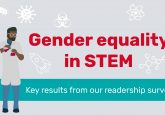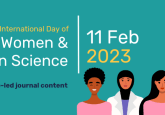Closing the gender gap in STEMM may take up to 250 years

It has been predicted that without immediate action, male-dominated disciplines, such as Physics, will take up to 250 years to establish gender equality.

Researchers from the University of Melbourne (Australia) have utilized computational methods to analyze 10 million academic papers and the genders of 36 million authors of papers on PubMed and arXiv in order to evaluate when we will reach gender equality in science, technology, engineering, mathematics and medicine (STEMM).
Co-author Devi Stuart Fox explained that the team focused on academic papers as they are the primary means of disseminating scientific knowledge:
“Author lists of these publications also provided information on the gender ratio of people working in a given field as well as seniority. In most disciplines represented in the dataset, the conventions regarding authorship order mean that first authors are typically junior researchers, while last authors tend to be more senior.”
It’s no secret that gender equality in STEMM is severely off balance. In physics, for example, the number of women in senior positions sits at just 13% and this gap is predicted to take 258 years to close.
“Topics with the fewest women authors included computer science, mathematics, surgery and chemistry,” commented Luke Holman, co-author of the study.
“Health-related disciplines like nursing, midwifery, and palliative care had the most female authors. The PubMed categories Social Sciences (predominantly social work journals) and speech-language pathology currently have more than 50% of women authors, and are becoming significantly more female-biased.”
In 87 out of 115 disciplines, significantly fewer than 45% of authors were women, with only five disciplines where authors were more than 55% women. Alongside this, the team discovered that junior authors are more likely to be women and senior authors are more likely to be men.
It was estimated that men are twice as likely to be invited to submit papers by journals as women were. There were also fewer women authors in wealthier countries such as Japan, Germany and Sweden than in poorer countries.
Practical measures that could help close the gender gap have already been identified and now need to be put in place. These include reforms of academic publishing and peer review; placing a greater recognition on the extra demands outside the workplace that traditionally fall upon women and taking action when hiring for positions.
The take home message? There’s still much more that can be done to address the gender gap in STEMM.





